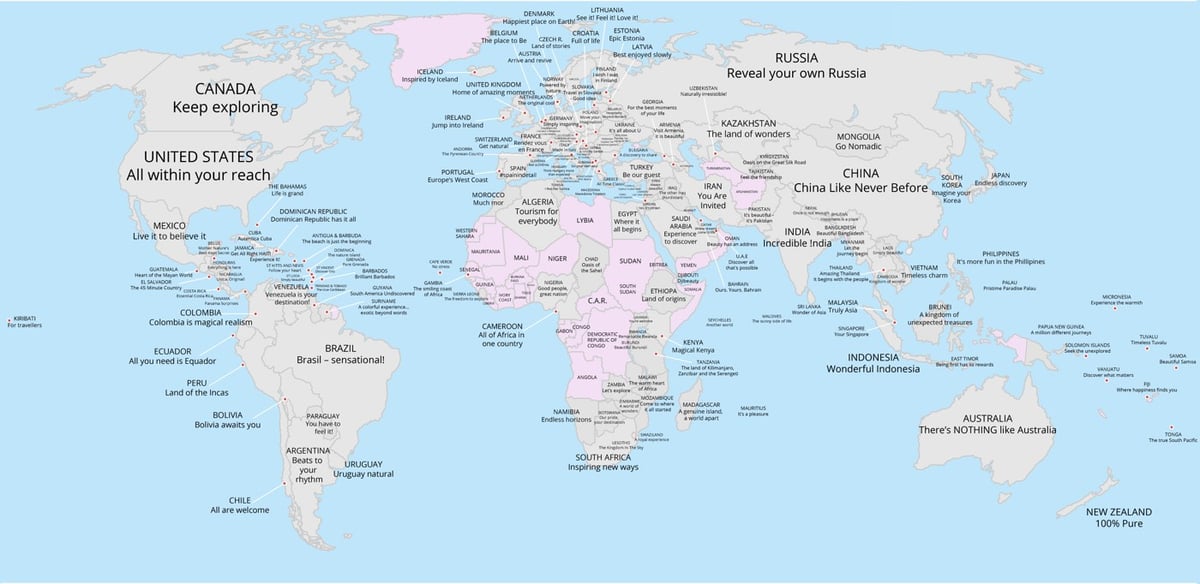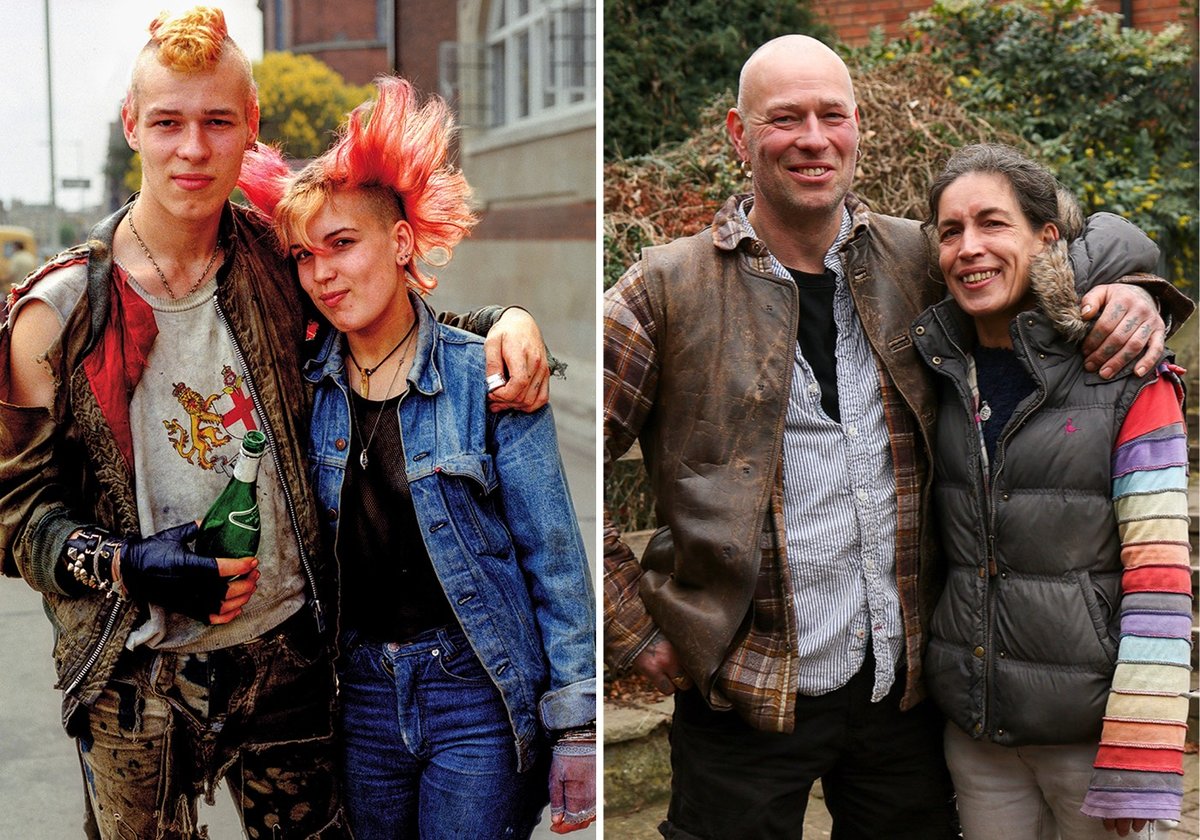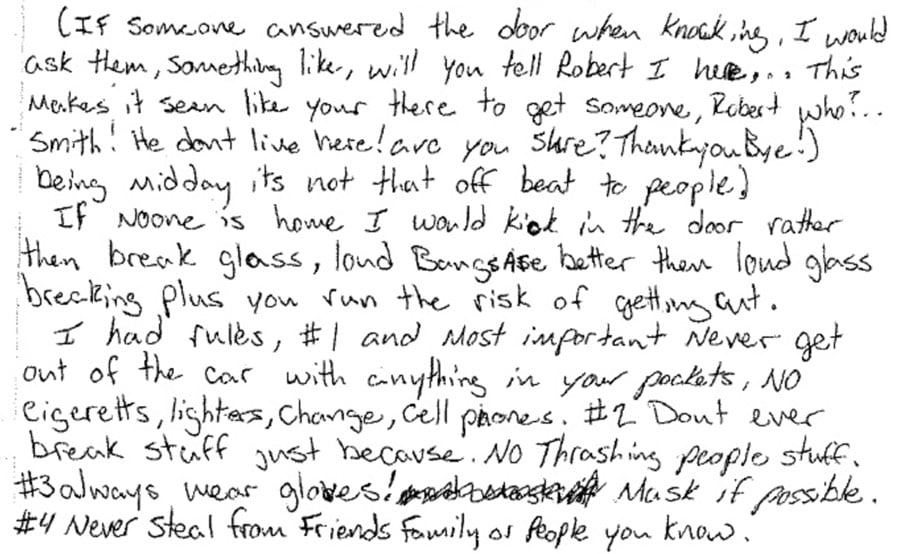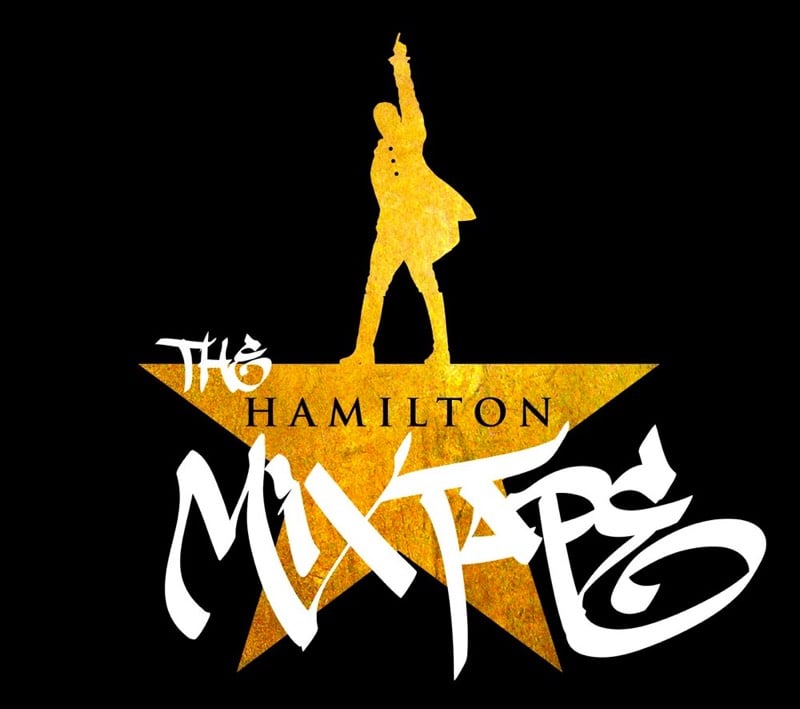


This site is made possible by member support. 💞
Big thanks to Arcustech for hosting the site and offering amazing tech support.
When you buy through links on kottke.org, I may earn an affiliate commission. Thanks for supporting the site!
kottke.org. home of fine hypertext products since 1998.
Entries for November 2016
China’s Lucky Knot bridge



Built by NEXT architects in the Chinese city of Changsha,1 the Lucky Knot bridge is a wonderfully inventive piece of architecture and engineering. It does not, however, appear very accessible to cyclists or the handicapped in the way that their Melkwegbridge project is. (via @robinsloan)
I’m guessing you’ve never heard of Changsha — I hadn’t. It’s the 36th most populous city in the world, with a greater population than any city in the US except NYC. The scale of China’s population is incredible…16 of the most populous 50 cities in the world are in China and many Americans would struggle to name more than 3 or 4 of them.↩
This is women’s work


For a photo project called Women’s Work, Chris Crisman made portraits of women who have jobs not typically done by women in the US. In an interview at aPhotoEditor, Crisman explained the why he did the project:
I am a father of two — a 4 year old boy and a 2 year old girl. I was raised to believe that I could do whatever I wanted to when I grew up. I want pass down a similar message to my children and without caveats. I want to raise my children knowing that their dreams have no limits and that they have parents supporting them to dive into anything they feel passionate about.
Crisman shot a short film of Sadie Samuels, the Maine lobster fisherman1 pictured in the photograph above.
From @tedgioia, an eclectic non-mainstream list of the best 100 albums of 2016. A glaring omission IMO: Lemonade.
A massive billion-dollar movable arch now covers the destroyed reactor at Chernobyl
A building which cost $1.5 billion and was 20 years in the making was moved into position over the highly radioactive remains of the main reactor at Chernobyl this week. The time lapse video above shows how the building was inched into place.
The new structure, which is about 500 feet long, has a span of 800 feet and is 350 feet high, is designed to last at least a century and is intended to prevent any additional spewing of toxic material from the stricken reactor.
Even with the building in place, the surrounding zone of roughly 1000 square miles will remain uninhabitable.
How the NY Times prepared for Castro’s death
In a peek at how the media sausage is made, the NY Times has documented how the newspaper prepared for the death of Fidel Castro. For instance, they’ve had an advance obituary on hand for him since 1959, which has been revised and rewritten dozens of times before it was finally published over the weekend.
Fidel Castro’s obituary cost us more man/woman hours over the years than any piece we’ve ever run.
Every time there was a rumor of death, we’d pull the obit off the shelf, dust it off, send it back to the writer, Tony DePalma, for any necessary updates, maybe add a little more polish here and there and then send it on to be copy-edited and made ready — yet again — for publication.
Even deep into his 70s and 80s, the Cuban dictator outlived the broadsheet size of the paper and digital media formats.
One piece that didn’t make it into this weekend’s digital coverage was a four-part, 20-plus-minute-long audio slide show on Mr. Castro’s life. The audio slide show — a mostly bygone format intended to marry photos and audio in an age when slow dial-up connections couldn’t handle video — was originally produced around 2006 by Geoff McGhee, Lisa Iaboni and Eric Owles and featured narration from Anthony DePalma, who wrote The Times’s obituary.
With over 80 photos and several audio files, the slide show was managed with a custom-made program called “configurator” that lived on a single, aging Macintosh in a windowless room on the ninth floor of the Times building.
That Mac and the program it housed died 7 years before Castro did.
Update: The Miami Herald also wrote up their preparations for Castro’s death, which they called The Cuba Plan.
I have a bulging file filled with various iterations of The Cuba Plan, before we relied on a shared Google Doc.
The plan changed drastically over the decades, driven by both changes in the industry and politics on the island.
Early in our planning, the document was 60 pages long.
Fidel Castro was still healthy and in power, and we planned for a possible political revolution. We played out the most extreme scenario, espoused by many experts, of unrest in the island, and Cubans on both sides of the straits taking to the seas. We thought carefully about the multiple ways we might get reporters into Cuba, knowing that at the time the government would not permit a Miami Herald journalist on the island. One plan might even have involved renting a boat.
(via @Julisa_Marie)
Fighting Authoritarianism: 20 Lessons from the 20th Century

Yale history professor Timothy Snyder took to Facebook to share some lessons from 20th century about how to protect our liberal democracy from fascism and authoritarianism. Snyder has given his permission to republish the list, so I’ve reproduced it in its entirety here in case something happens to the original.
Americans are no wiser than the Europeans who saw democracy yield to fascism, Nazism, or communism. Our one advantage is that we might learn from their experience. Now is a good time to do so. Here are twenty lessons from the twentieth century, adapted to the circumstances of today.
1. Do not obey in advance. Much of the power of authoritarianism is freely given. In times like these, individuals think ahead about what a more repressive government will want, and then start to do it without being asked. You’ve already done this, haven’t you? Stop. Anticipatory obedience teaches authorities what is possible and accelerates unfreedom.
2. Defend an institution. Follow the courts or the media, or a court or a newspaper. Do not speak of “our institutions” unless you are making them yours by acting on their behalf. Institutions don’t protect themselves. They go down like dominoes unless each is defended from the beginning.
3. Recall professional ethics. When the leaders of state set a negative example, professional commitments to just practice become much more important. It is hard to break a rule-of-law state without lawyers, and it is hard to have show trials without judges.
4. When listening to politicians, distinguish certain words. Look out for the expansive use of “terrorism” and “extremism.” Be alive to the fatal notions of “exception” and “emergency.” Be angry about the treacherous use of patriotic vocabulary.
5. Be calm when the unthinkable arrives. When the terrorist attack comes, remember that all authoritarians at all times either await or plan such events in order to consolidate power. Think of the Reichstag fire. The sudden disaster that requires the end of the balance of power, the end of opposition parties, and so on, is the oldest trick in the Hitlerian book. Don’t fall for it.
6. Be kind to our language. Avoid pronouncing the phrases everyone else does. Think up your own way of speaking, even if only to convey that thing you think everyone is saying. (Don’t use the internet before bed. Charge your gadgets away from your bedroom, and read.) What to read? Perhaps “The Power of the Powerless” by V’aclav Havel, 1984 by George Orwell, The Captive Mind by Czeslaw Milosz, The Rebel by Albert Camus, The Origins of Totalitarianism by Hannah Arendt, or Nothing is True and Everything is Possible by Peter Pomerantsev.
7. Stand out. Someone has to. It is easy, in words and deeds, to follow along. It can feel strange to do or say something different. But without that unease, there is no freedom. And the moment you set an example, the spell of the status quo is broken, and others will follow.
8. Believe in truth. To abandon facts is to abandon freedom. If nothing is true, then no one can criticize power, because there is no basis upon which to do so. If nothing is true, then all is spectacle. The biggest wallet pays for the most blinding lights.
9. Investigate. Figure things out for yourself. Spend more time with long articles. Subsidize investigative journalism by subscribing to print media. Realize that some of what is on your screen is there to harm you. Bookmark PropOrNot or other sites that investigate foreign propaganda pushes.
10. Practice corporeal politics. Power wants your body softening in your chair and your emotions dissipating on the screen. Get outside. Put your body in unfamiliar places with unfamiliar people. Make new friends and march with them.
11. Make eye contact and small talk. This is not just polite. It is a way to stay in touch with your surroundings, break down unnecessary social barriers, and come to understand whom you should and should not trust. If we enter a culture of denunciation, you will want to know the psychological landscape of your daily life.
12. Take responsibility for the face of the world. Notice the swastikas and the other signs of hate. Do not look away and do not get used to them. Remove them yourself and set an example for others to do so.
13. Hinder the one-party state. The parties that took over states were once something else. They exploited a historical moment to make political life impossible for their rivals. Vote in local and state elections while you can.
14. Give regularly to good causes, if you can. Pick a charity and set up autopay. Then you will know that you have made a free choice that is supporting civil society helping others doing something good.
15. Establish a private life. Nastier rulers will use what they know about you to push you around. Scrub your computer of malware. Remember that email is skywriting. Consider using alternative forms of the internet, or simply using it less. Have personal exchanges in person. For the same reason, resolve any legal trouble. Authoritarianism works as a blackmail state, looking for the hook on which to hang you. Try not to have too many hooks.
16. Learn from others in other countries. Keep up your friendships abroad, or make new friends abroad. The present difficulties here are an element of a general trend. And no country is going to find a solution by itself. Make sure you and your family have passports.
17. Watch out for the paramilitaries. When the men with guns who have always claimed to be against the system start wearing uniforms and marching around with torches and pictures of a Leader, the end is nigh. When the pro-Leader paramilitary and the official police and military intermingle, the game is over.
18. Be reflective if you must be armed. If you carry a weapon in public service, God bless you and keep you. But know that evils of the past involved policemen and soldiers finding themselves, one day, doing irregular things. Be ready to say no. (If you do not know what this means, contact the United States Holocaust Memorial Museum and ask about training in professional ethics.)
19. Be as courageous as you can. If none of us is prepared to die for freedom, then all of us will die in unfreedom.
20. Be a patriot. The incoming president is not. Set a good example of what America means for the generations to come. They will need it.
A great thought-provoking list. “Corporeal politics”…I like that phrase. And I’ve seen many references to Hannah Arendt’s The Origins of Totalitarianism in recent weeks.
See also Five Steps to Tyranny and The 14 Features of Eternal Fascism.
Update: Snyder has turned this list into a short book called On Tyranny: Twenty Lessons from the Twentieth Century.
Note: Illustration by the awesome Chris Piascik.
Watching “Arrival” After the Election, a lovely reflection on a wonderful movie by @jiatolentino
Every Story Is the Same
A few years ago, Dan Harmon broke the structure of stories down into eight basic parts:
- A character is in a zone of comfort,
- But they want something.
- They enter an unfamiliar situation,
- Adapt to it,
- Get what they wanted,
- Pay a heavy price for it,
- Then return to their familiar situation,
- Having changed.
Calling himself a “corny screenwriting guru”, this is Harmon’s attempt to simplify Joseph Campbell’s concept of the monomyth, or hero’s journey.
A hero ventures forth from the world of common day into a region of supernatural wonder: fabulous forces are there encountered and a decisive victory is won: the hero comes back from this mysterious adventure with the power to bestow boons on his fellow man.
In the video above, Will Schoder explains Harmon’s theory using a number of different stories (movies, books, TV shows, etc.) as examples, most notably the original Star Wars, which George Lucas created using Campbell’s ideas.
Evolution at work: ivory poaching and tuskless elephants

Poachers in Africa in search of the biggest ivory tusks have altered the gene pool of African elephants in the process.
In Gorongosa National Park in Mozambique, 90 per cent of elephants were slaughtered between 1977 and 1992, during the country’s civil war. Dr Poole said that because poachers disproportionately targeted tusked animals, almost half the females over 35 years of age have no tusks, and although poaching is now under control and the population is recovering well, they are passing the tuskless gene down to their daughters: 30 per cent of female elephants born since the end of the war also do not have tusks.
“Females who are tuskless are more likely to produce tuskless offspring,” she said.
(via mr)
Update: Vox has an interesting look at the growing trend of tuskless elephants.
Is liberal democracy in trouble? “Warning signs are flashing red.”
Political scientists Yascha Mounk and Roberto Stefan Foa have been doing research on the stability of contemporary liberal democracies, looking in particular at the assumption a country becomes a democracy, it will stay that way. Their conclusion? We may be in trouble: “liberal democracies around the world may be at serious risk of decline”.
But since 2005, Freedom House’s index has shown a decline in global freedom each year. Is that a statistical anomaly, a result of a few random events in a relatively short period of time? Or does it indicate a meaningful pattern?
Mr. Mounk and Mr. Foa developed a three-factor formula to answer that question. Mr. Mounk thinks of it as an early-warning system, and it works something like a medical test: a way to detect that a democracy is ill before it develops full-blown symptoms.
The first factor was public support: How important do citizens think it is for their country to remain democratic? The second was public openness to nondemocratic forms of government, such as military rule. And the third factor was whether “antisystem parties and movements” — political parties and other major players whose core message is that the current system is illegitimate — were gaining support.
Regarding that first factor, public support for democracy, their research indicates a worrying trend: younger people around the world think it’s less “essential” to live in a democracy.

Younger people would also be more in favor of military rule:
Support for autocratic alternatives is rising, too. Drawing on data from the European and World Values Surveys, the researchers found that the share of Americans who say that army rule would be a “good” or “very good” thing had risen to 1 in 6 in 2014, compared with 1 in 16 in 1995.
That trend is particularly strong among young people. For instance, in a previously published paper, the researchers calculated that 43 percent of older Americans believed it was illegitimate for the military to take over if the government were incompetent or failing to do its job, but only 19 percent of millennials agreed. The same generational divide showed up in Europe, where 53 percent of older people thought a military takeover would be illegitimate, while only 36 percent of millennials agreed.
What’s interesting is that Trump, who Mounk believes is a threat to liberal democracy in the US, drew his support from older Americans, which would seem to be a contradiction. It is also unclear if young people have always felt this way (i.e. do people appreciate democracy more as they get older?) or if this is a newly growing sentiment (i.e. people are now less appreciative of democracy, young people particularly so).
Something I think about often is cultural memory and how it shifts, seen most notably on kottke.org in my mild obsession with The Great Span. Back in July, writer John Scalzi tweeted:
Sometimes feels like a strong correlation between WWII passing from living memory, and autocracy seemingly getting more popular.
Scalzi is on to something here, I think. Those who fought in or lived through World War II are either dead or dying. Their children, the Baby Boomers, had a very different experience in hunky dory Leave It to Beaver postwar America.1 Anyone under 50 probably doesn’t remember anything significant about the Vietnam War and anyone under 35 didn’t really experience the Cold War.2 Couple that with an increasingly poor educational experience in many areas of the country and it seems as though Americans have forgotten how bad it was (Stalin, Hitler, the Holocaust, Vietnam, the Cold War) and take for granted the rights and protections that liberal democracy, despite its faults, offers its citizens. Shame on us if we throw all of that hard-fought progress away in exchange for — how did Franklin put it? — “a little temporary safety”.
Update: The graph above showing public support for democracy is misleading and overly dramatic. Looking at the average scores is more instructive for people’s feelings on democracy:
So where does this graph go wrong? It plots the percentage of people who answer 10, and it treats everyone else the same. The graph treats the people who place themselves at 1 as having the same commitment to democracy as those who answer 9. In reality, almost no one (less than 1 percent) said that democracy is “not at all important.”
Here’s a less misleading graph:

The kicker?
Vast majorities of younger people in the West still attach great importance to living in a democracy.
Well, white male Baby Boomers did. Everyone else, less so.↩
I remember the Cold War vividly — it’s why an increasingly autocratic Putin-led Russia scares the shit out of me — that feeling of ominous dread, day after day, that the world could end, actually end. I’ve only felt that way one other time in my life: in the months after 9/11. And that feeling passed after many months…the Cold War dread was constant for years.↩
Come Together, a short film by Wes Anderson
Wes Anderson directed a short holiday film starring Adrien Brody for H&M. It is delightful. You can criticize the twee formality in his work,1 but this is a reminder that Anderson can bring the emotion when he wants.
I mean, I love that about his stuff, but I know many don’t. Criticize away!↩
The first successful C-section in history? Perhaps in 1337 in Prague.
Hamilton/Beyonce mashup
A singing group delivers a tight six-minute mashup of songs by Beyonce and the hit Broadway show Hamilton. It starts a bit slow but gets better as it goes along.
Voting under the influence of celebrity
Dave Pell from Nextdraft on the connection between OJ Simpson and Donald Trump and how celebrity warps American minds.
By the time OJ Simpson was arrested after the infamous ride in the White Ford Bronco, it was totally impossible to imagine he’d be found not guilty.
By the time Trump reached election day, he had broken every rule of politics. He committed more campaign-ending gaffes in a week than most losing presidential campaigns during an entire run.
Both men had a fame that completely cut across all American demographics.
I thought I’d mentioned this somewhere at the time — Twitter? kottke.org? Can’t find it… — but when I watched the excellent OJ: Made in America documentary this summer, the parallels between the OJ story and Trump made me feel very uneasy. Two men, both broadly famous, both wealthy, both charming, both outcasts from their respective social groups, both misogynist abusers, both committed crimes, both gamed the American political and legal systems to get away with something that they shouldn’t have. OJ eventually got his but will Trump? Are Americans doomed to keep repeating these mistakes when it comes to celebrity?
Boo, Cyber Monday! Yay, giving!
The eagerly awaited kottke.org holiday gift guide for this year is coming soon (here is last year’s in the meantime), but very quickly: if you’re in the holiday shopping mood, check out these Cyβ3r M0nd@y deals: the KitchenAid 6-qt. stand mixer for $220 (60% off), the Kindle Paperwhite for $100, the Anova Precision Cooker (for easy at-home sous vide cooking) for $110, the Amazon Echo for $140, and did you know that you can get a Segway for $600 now? Remember when those were going to change how cities were built? Good times.
Bonus: this is what happens when you order any of these items…an Amazon robot scurries to fulfill it.
A glimpse at how self-driving cars really will change how cities are built.
President Obama names 2016 Presidential Medal of Freedom recipients
Lost in the shuffle over the past two weeks — with the focus on the incoming presidential administration and the Thanksgiving holiday — was President Obama’s awarding of the Presidential Medal of Freedom to 21 worthy recipients.
The Presidential Medal of Freedom is the Nation’s highest civilian honor, presented to individuals who have made especially meritorious contributions to the security or national interests of the United States, to world peace, or to cultural or other significant public or private endeavors.
Many of the honorees have dedicated their lives to science, technology, and social justice, including:
Margaret H. Hamilton led the team that created the on-board flight software for NASA’s Apollo command modules and lunar modules.
Rear Admiral Grace Hopper, known as “Amazing Grace” and “the first lady of software,” was at the forefront of computers and programming development from the 1940s through the 1980s.
Bill and Melinda Gates established the Bill & Melinda Gates Foundation in 2000 to help all people lead healthy, productive lives. In developing countries, the foundation focuses on improving people’s health and giving them the chance to lift themselves out of hunger and extreme poverty.
Kareem Abdul-Jabbar is the National Basketball Association’s all-time leading scorer who helped lead the Los Angeles Lakers to five championships and the Milwaukee Bucks to another.
Ellen DeGeneres is an award-winning comedian who has hosted her popular daytime talk show, The Ellen DeGeneres Show, since 2003 with her trademarked humor, humility, and optimism.
Maya Lin is an artist and designer who is known for her work in sculpture and landscape art. She designed the Vietnam Veterans Memorial in Washington D.C. and since then has pursued a celebrated career in both art and architecture.
You can watch the full event here or just catch the highlights:
Obama has made the most awards of the medal by any President since it was established by President Kennedy in 1963. Notable recipients though the years include Thurgood Marshall, Kennedy himself (posthumously), Cesar Chavez, Mother Teresa, Aretha Franklin, Stephen Hawking, Maya Angelou, Mies van der Rohe, Lucille Ball, Yo-Yo Ma, Julia Child, and Rosa Parks.
It is important these days to remember the good work, the good deeds, and the good fight being fought by many creative, fierce, dynamic, and rational people who need our help and attention more than ever.
Why chess has failed to catch on as a spectator sport
Magnus Carlsen and Sergey Karjakin are competing in the FIDE World Chess Championship Match in NYC and are currently tied going into the final match. By all accounts, it’s been a tense competition. But watching chess being played in real time is perhaps only for die-hard fans. Here’s video of Karjakin thinking about a move for 25 minutes:
And here’s Carlsen thinking about Karjakin thinking about the same move for 25 minutes:
(via @juririm)
A world map of every country’s tourism slogan

A site called FamilyBreakFinder produced a world map with every country’s tourism slogan on it. A few of my favorite slogans:
Netherlands: The original cool
Colombia: Colombia is magical realism
El Salvador: The 45 minute country
Slovenia: I feel sLOVEnia
Cape Verde: No stress
Spain: #spainindetail
Morocco: Much mor
Bhutan: Happiness is a place
India: Incredible !ndia
Some of these countries should ask their ad agencies for their money back. (via @ftrain)
How Steve Jobs Became a Billionaire. This is a good story about Pixar with a bad title.
An animated interpretation of The Garden of Earthly Delights
The MOTI Museum in The Netherlands commissioned Studio Smack to interpret the middle panel of Hieronymus Bosch’s The Garden of Earthly Delights and they delivered a beautiful high-definition animation. See also an interactive version of the real Garden of Earthly Delights. (via waxy)
Five Steps to Tyranny
In 2000, the BBC broadcast an hour-long documentary called Five Steps to Tyranny, a look at how ordinary people can do monstrous things in the presence of authority.
Horrific things happen in the world we live in. We would like to believe only evil people carry out atrocities. But tyrannies are created by ordinary people, like you and me.
[Colonel Bob Stewart:] “I’d never been to the former Yugoslavia before in my life, so what actually struck me about the country was how beautiful it was, how nice people were, and yet how ghastly they could behave.”
The five steps are:
- “us” and “them” (prejudice and the formation of a dominant group)
- obey orders (the tendency to follow orders, especially from those with authority)
- do “them” harm (obeying an authority who commands actions against our conscience)
- “stand up” or “stand by” (standing by as harm occurs)
- exterminate (the elimination of the “other”)
To illustrate each step, the program uses social psychology experiments and explorations like Jane Elliott’s blue eyes/brown eyes exercise on discrimination, the Stanford prison experiment conducted by Philip Zimbardo (who offers commentary throughout the program), and experiments by Stanley Milgram on obedience, including his famous shock experiment, in which a participant (the “teacher”) is directed to shock a “learner” for giving incorrect answers.
The teacher is told to administer an electric shock every time the learner makes a mistake, increasing the level of shock each time. There were 30 switches on the shock generator marked from 15 volts (slight shock) to 450 (danger — severe shock).
The “learners” were in on the experiment and weren’t actually shocked but were told to react as if they were. The results?
65% (two-thirds) of participants (i.e. teachers) continued to the highest level of 450 volts. All the participants continued to 300 volts.
The program also shows how real-life tyrannies have developed in places like Rwanda, Burma, and Bosnia. From a review of the show in The Guardian:
But there is no doubt about the programme’s bottom line: tyrannies happen because ordinary people are surprisingly willing to do tyranny’s dirty work.
Programmes like this can show such things with great vividness — and there is news footage from Bosnia, or from Rwanda, or from Burma to back it up with terrible clarity. It isn’t clear why the majority is so often compliant, but the implication is that democracy should always be grateful to the protesters, the members of the awkward squad, the people who challenge authority.
But don’t take it for granted that the awkward squad must be a force for good: in Germany, in the 1920s, Hitler was an outsider, a protester, a member of the awkward squad. When he came to power in 1932, he found that German medical professors and biologists had already installed a racial ideology for him, one which had already theorised about the elimination of sick or disabled German children, and the rejection of Jewish professionals as agents of pollution.
Zimbardo himself offers this final word in the program:
For me the bottom line message is that we could be led to do evil deeds. And what that means is to become sensitive to the conditions under which ordinary people can do these evil deeds — what we have been demonstrating throughout this program — and to take a position of resisting tyranny at the very first signs of its existence.
Election security expert J. Alex Halderman: Want to Know if the Election was Hacked? Look at the Ballots.
Silence, a new film by Martin Scorsese
It’s been three years since The Wolf of Wall Street and Martin Scorsese is finally coming out with a new film. Based on the novel by Shusaku Endo, Silence is the story of a pair of Jesuit priests who travel to Japan in the 17th century to find a third priest and to convert the Japanese to Christianity. Adam Driver, Liam Neeson, and Andrew Garfield star.
Two years ago, Tony Zhou made an episode of Every Frame a Painting called Martin Scorsese - The Art of Silence.
Since Scorsese has been working on making Silence for over 20 years, Zhou’s video must have been a little wink to the director’s true fans.
Mesmerizing Mushroom Time Lapse From Planet Earth II
Damn the Brits! First Brexit paves the way for Trump (ok, not entirely accurate) and now they are currently enjoying Planet Earth II with the sublime David Attenborough while we Americans have to wait until late January 2017, at which point there might not even be a planet Earth on which to watch nature frolic on our living room high-definition displays. But — Jesus where was I? Oh yes: for now we can watch this clip from the Jungles episode of Planet Earth II about fungi, including some great time lapse footage of mushrooms growing, some of which glow in the dark! Also from Planet Earth II: the incredible iguana/snake chase scene and bears scratching themselves on trees. (via colossal)
The trans community of Christopher Street



Over a number of recent summers, well-known portrait photographer Mark Seliger has been documenting the transgender community that gathers on Christopher St in the West Village. Since Seliger’s website is slow and bloated, I’d recommend checking out coverage of the photos on The Advocate, The New Yorker, American Photo, and PDN. I lived on Christopher Street for several years1 and definitely recognize a couple of people in Seliger’s photos.
It was in the Village, on Christopher Street and the nearby piers, where many trans and queer people first shared space with others like them. For generations, these places provided mirrors for those who rarely saw reflections of themselves. On Christopher Street, there were multitudes of potential selves: transgender, transsexual, non-binary, genderqueer, femme, butch, cross-dresser, drag king or queen, and other gender identities and sexual orientations that challenge social norms.
Seliger has collected the photos into a book, On Christopher Street: Transgender Stories and the photos will be on display at 231 Projects in Chelsea until early January.
What an amazing and challenging place to live. While the rest of Manhattan (and the West Village) was either gentrified or gentrifying quickly, on Christopher St, you could still find aspects of “old New York” some long-time residents are so nostalgic for. When I lived there (roughly 2009-2014), it was still very much a place where LGBTQ+ people (especially those of color) could come and be their authentic selves with other members of their community, an opportunity denied them in their neighborhoods in Queens or Jersey City. But there was also crime: people openly selling drugs on the corner, robberies, open prostitution, anti-gay violence, and every single weekend from mid-spring to mid-fall, there was property damage up and down the street from visitors absolutely trashing the neighborhood. In response to the crime, the NYPD basically set up a command center on the street with mobile patrol towers and massive lights. Some summer Saturday nights felt like a war zone.↩
The 100 most influential images of all time



Time Magazine has selected the 100 most influential photos of all time, from the first permanent photograph taken (in 1826) to the heartbreaking photo of the body of a 3-year-old refugee washed up on a beach from last year. As you might expect, many of the images are tough to view, but history and our good conscience compels us not to look away.
I was pleased to see Josef Koudelka’s photo Invasion of Prague included (it’s the one above with the wristwatch); it’s one of my favorites.
Josef Koudelka, a young Moravian-born engineer who had been taking wistful and gritty photos of Czech life, was in the capital when the soldiers arrived. He took pictures of the swirling turmoil and created a groundbreaking record of the invasion that would change the course of his nation. The most seminal piece includes a man’s arm in the foreground, showing on his wristwatch a moment of the Soviet invasion with a deserted street in the distance. It beautifully encapsulates time, loss and emptiness — and the strangling of a society.
The photos are also available in book form.
Can hypothermia save lives in the trauma center?
Nicola Twilley reports on a relatively new technique being used in a Baltimore trauma center: freezing trauma victims to give the doctors working on them more time to save their lives.
When this patient loses his pulse, the attending surgeon will, as usual, crack his chest open and clamp the descending aorta. But then, instead of trying to coax the heart back into activity, the surgeon will start pumping the body full of ice-cold saline at a rate of at least a gallon a minute. Within twenty minutes (depending on the size of the patient, the number of wounds, and the amount of blood lost), the patient’s brain temperature, measured using a probe in the ear or nose, will sink to somewhere in the low fifties Fahrenheit.
At this point, the patient, his circulatory system filled with icy salt water, will have no blood, no pulse, and no brain activity. He will remain in this state of suspended animation for up to an hour, while surgeons locate the bullet holes or stab wounds and sew them up. Then, after as much as sixty minutes without a heartbeat or a breath, the patient will be resuscitated.
Brain damage is a risk — as is, you know, dying from hypothermia — but there are many instances of people surviving even after their hearts stop for an hour or two.
Casey Neistat ends his vlog
For the past year and a half, Casey Neistat has been putting out a daily 10-minute video blog about his day. After more than 500 episodes, Neistat announced that he’s hanging up his vblogging spurs to pursue other projects. In his final video, he discusses the complacency of success and the difficulty of advancing your career without taking creative risks, something many of us can identify with.
What [the vlog] hasn’t been doing is challenging me. It hasn’t been the creative fistfight that I want and need every single day.
I’m definitely a fan and can’t wait to see what he comes up with next.
Update: Ah, well that explains it: CNN Acquires Social-Video Startup Beme, Co-Founded by YouTube Star Casey Neistat.
CNN has acquired video-sharing app startup Beme, co-founded by popular YouTube creator Casey Neistat and Matt Hackett, and will invest in the team to launch a new standalone media brand.
Terms of the deal were not disclosed. CNN said the new venture that it’s forming out of the acquisition - aimed at reaching millennial viewers with the street cred of Neistat’s reporting and commentary - will launch in the summer of 2017. All 11 of Beme’s employees will join CNN; the cable news network will be shutting down Beme, which had garnered more than 1 million downloads.
The Atlas of Design

The North American Cartographic Information Society has published the third volume of The Atlas of Design, a book consisting of “beautiful and inspiring maps from around the world”.
National Geographic took a look at some of the maps included in the book.
The striking panorama above of Denali and the Alaska Range was created by draping satellite imagery over a three-dimensional model of the terrain. Brooke Marston, a cartographer at the U.S. State Department’s Bureau of Intelligence and Research, was inspired by the Austrian artist Heinrich Berann, who is famed for his beautiful panoramas of mountain ranges.
While Berann took some artistic license with the precise location and positioning of mountains in his panoramas, Marston’s map is true to the geography. The oblique, bird’s-eye view emphasizes the sheer size of the mountains while maintaining a closeness with the viewer. “Good oblique mapping can transport the viewer straight into the landscape,” Elmer says. “This map makes me feel lost among the jagged, cold, majestic mountains just looking at it.”
NASA’s analysis of seemingly impossible engine: it works

NASA has published their highly anticipated and peer-reviewed analysis of the EM Drive and they’ve concluded the engine works despite appearing to violate Newton’s third law of motion.
In case you’ve missed the hype, the EM Drive, or Electromagnetic Drive, is a propulsion system first proposed by British inventor Roger Shawyer back in 1999.
Instead of using heavy, inefficient rocket fuel, it bounces microwaves back and forth inside a cone-shaped metal cavity to generate thrust.
According to Shawyer’s calculations, the EM Drive could be so efficient that it could power us to Mars in just 70 days.
But, there’s a not-small problem with the system. It defies Newton’s third law, which states that everything must have an equal and opposite reaction.
According to the law, for a system to produce thrust, it has to push something out the other way. The EM Drive doesn’t do this.
Yet in test after test it continues to work. Last year, NASA’s Eagleworks Laboratory team got their hands on an EM Drive to try to figure out once and for all what was going on.
There’s a lot of skepticism around this project, but NASA’s review is definitely a boost to the EM Drive’s credibility.
Update: Just to reiterate, even with this latest paper, there is still skepticism about the EM Drive.
In the end, we can’t conclude that this is a null result, nor can we excitedly say that it works. The sad truth is that this paper is not much better than the researchers’ last one, and it doesn’t actually have enough detail to let us fully evaluate the data. Nor does the paper have enough data to allow a conclusion in the absence of a model. And despite mention of a model in the paper, any model that exists is very well hidden.
Also a clue that the science isn’t quite there on this one yet: very few mainstream science outlets covered this. When the NY Times picks this up and gets prominent physicists on the record about the thruster’s promise, that’s when you’ll know something’s up. Until then, remain skeptical. (via @paudo)
Actors’ movie accents, rated
Erik Singer is a dialect coach who works with actors to perfect different accents and dialects. In this video, he quickly analyzes the performances of 32 actors based on their use of accents. Pretty fascinating to watch. He singles out Philip Seymour Hoffman’s portrayal of Truman Capote as an exemplary use of the proper accent. High marks also go to Kate Winslet doing a Polish accent, Idris Elba’s South African accent while portraying Nelson Mandela (and his Bal’more accent in The Wire), and Cate Blanchett playing Katherine Hepburn in The Aviator.
Nicolas Cage in Con Air and Tom Cruise in Far and Away? Well, let’s just say they couldn’t pahk the cah in Hahvahd Yahd.
Update: Actress Sarah Jones takes a slightly different approach to speaking in different accents. Instead of aiming for a particular generalized dialect, she picks out a particular person to impersonate.
Let’s say you want to sound like a Trinidadian woman, as Ms. Jones does in her show. She recommends you watch YouTube clips of speakers at council meetings in Trinidad until you find the person you most want to sound like. If you can meet your subject in person, it will help make your goal much easier to reach.
“I ask them to speak something very slowly three times in a row and then I have them say it at normal speed the way they’d say it three times in a row,” she said. “I have them say it the way they’d say it in school as compared to how they’d say it to a friend.”
Be sure to play the embedded audio clips of Jones speaking as her different characters. And you can watch her in action in this TED Talk:
Beastie Boys / Daft Punk mashup
This is pretty simple: 8 songs from the Beastie Boys remixed using beats and samples from Daft Punk. If you need further prompting, it’s probably not for you.
There’s something — I don’t know, charming? — about this interview with restaurateur Keith McNally.
The last steps on the Moon
In May of 1961, President John F. Kennedy told Congress and the rest of the American public that the US was going to send a man to the Moon. Just over 11 years later, as part of the Apollo 17 mission in December 1972, humans set foot on the Moon for the last time.1 The Last Steps is a summary of that final mission, during which NASA accomplished the near-impossible yet again and was met with increasing public indifference about a journey that had taken on the ease of a car trip to grandma’s house.
Update: Perhaps humans will set foot on the Moon sooner than 2060. The European Space Agency is planning on a manned mission “by 2030” and China is shooting for 2036. (via @T_fabriek)
For now, I guess I should add. It’s been 44 years since then and at the rate things are going, it might be another 44 years before it happens again. I’m hoping for a reboot of the Apollo franchise sooner rather than later, though.↩
A reading list for resistance
Over at Literary Hub, Emily Temple offers a “reading list for resistance”, a list of 25 Works of Fiction and Poetry for Anger and Action.
Included are The Handmaid’s Tale by Margaret Atwood:
This is the book women will be whispering about to one another in Trump’s America-an all-too-real vision of our country under a totalitarian theocracy where women are stripped of their rights and kept around only as breeders or servants.
The Dispossessed by Ursula K. Le Guin:
There was a wall. It did not look important. It was built of uncut rocks roughly mortared. An adult could look right over it, and even a child could climb it. Where it crossed the roadway, instead of having a gate it degenerated into mere geometry, a line, an idea of boundary. But the idea was real.
And of course, George Orwell’s 1984:
To know and not to know, to be conscious of complete truthfulness while telling carefully constructed lies, to hold simultaneously two opinions which cancelled out, knowing them to be contradictory and believing in both of them, to use logic against logic…
1984 was my favorite book for a long time — I first read it when I was about 10 years old and reread it every year or two well into my 20s. I haven’t read it in more than 10 years…perhaps it’s time for another go.
The Pokémon Cookbook! (Note: this book does not teach you how to cook Pokémon characters.)
Beeeeeeeeeeeee Mooooooovie
This is the trailer for the animated film Bee Movie, except that the action and audio is slowed down every time someone says “bee”. That is a little bit clever.
Update: Monkeying with bits of video based on simple rules is a full-blown thing on YouTube right now. The Bee Movie seems to have started it off and there are now many variations on the theme: every “bee” is repeated by how many were said before it, every time they say bee it gets faster, the Seinfeld theme plays every time they say bee, and every time they say bee it does the whole trailer really fast. It’s spread to other media: here’s the video for All Star by Smash Mouth but it gets 15% faster every time he says “the” (which is a great illustration of exponential growth, like compound interest), the first Harry Potter movie but every time they say his name it gets faster, and so on. (via @waxpancake)
Global weirding continues with massive Arctic warm-up

Something is rotten to the north of Denmark. Climate scientists are alarmed at the extreme warmth in the Arctic right now. It’s currently dark up there 24 hours a day, which usually means cold temperatures and rapidly freezing ice. Instead, temperatures are rising…Arctic temps are currently a whopping 36°F above normal.
“The Arctic warmth is the result of a combination of record-low sea-ice extent for this time of year, probably very thin ice, and plenty of warm/moist air from lower latitudes being driven northward by a very wavy jet stream.”
Francis has published research suggesting that the jet stream, which travels from west to east across the Northern Hemisphere in the mid-latitudes, is becoming more wavy and elongated as the Arctic warms faster than the equator does.
“It will be fascinating to see if the stratospheric polar vortex continues to be as weak as it is now, which favors a negative Arctic Oscillation and probably a cold mid/late winter to continue over central and eastern Asia and eastern North America. The extreme behavior of the Arctic in 2016 seems to be in no hurry to quit,” Francis continued.
Is 2017 the year the Arctic finally loses most of the ice cap during the summer?
The Aberdeen Bestiary, a gorgeous medieval illuminated manuscript



A bestiary was a type of book popular in the Middle Ages, featuring descriptions of animals accompanied by moral lessons. The Aberdeen Bestiary is a particularly fine example of a 12th century bestiary.
The Aberdeen Bestiary (Aberdeen University Library MS 24) is considered to be one of the best examples of its type due to its lavish and costly illuminations. The manuscript, written and illuminated in England around 1200, is of added interest since it contains notes, sketches and other evidence of the way it was designed and executed.
Thanks to the work of the University of Aberdeen in Scotland, where the book has been housed since the 1620s, a high-resolution copy of the book is available to browse online. The level of detail at full magnification is incredible. The text accompanying the top image of a panther is translated as:
There is an animal called the panther, multi-coloured, very beautiful and extremely gentle. Physiologus says of it, that it has only the dragon as an enemy. When it has fed and is full, it hides in its den and sleeps. After three days it awakes from its sleep and gives a great roar, and from its mouth comes a very sweet odour, as if it were a mixture of every perfume. When other animals hear its voice, they follow wherever it goes, because of the sweetness of its scent. Only the dragon, hearing its voice, is seized by fear and flees into the caves beneath the earth. There, unable to bear the scent, it grows numbed within itself and remains motionless, as if dead. Thus our Lord Jesus Christ, the true panther, descending from Heaven, snatched us from the power of the devil. And, through his incarnation, he united us to him as sons, taking everything, and ‘leading captivity captive, gave gifts to men’ (Ephesians, 4:8). The fact that the panther is a multi-coloured animal, signifies Christ, who is as Solomon said the wisdom of God the Father, an understanding spirit, a unique spirit, manifold, true, agreeable, fitting, compassionate, strong, steadfast, serene, all-powerful, all-seeing.
Jesus, the true panther. (via hyperallergic)
Urged to eat less meat, Americans are actually eating more
For most of the past decade, consumption of meat in the United States remained flat or declined.
For environmental, health, and animal welfare advocates, this was great news. Surely it meant that efforts to raise awareness about the disturbing impacts of meat production were inspiring people to cut back on hamburgers and bacon. As Paul Shapiro, vice president of Farm Animal Protection for the Humane Society of the United States, wrote in 2012, “The pressure is being felt all over, and for the first time in decades, our overconsumption of meat is beginning to get reined in.”
But according to research by a Dutch bank, US meat consumption jumped in 2015.
Not only was last year noteworthy for the near 5% increase in per capita consumption, but also due to the fact that the growth was achieved without the help of beef, consumption of which was flat. We expect US protein production growth of 2.5% per annum through 2018 — down from 3% in 2015 — with beef being the largest contributor relative to pork and poultry.
What drove the decline in the first place? Price. It always comes back to supply and demand.
Ranchers and farmers trimmed their herds because of the recession, historically high feed costs, and drought in the Great Plains. Meanwhile, domestic disease outbreaks like porcine epidemic diarrhea virus, or PEDv, meant that tens of thousands of hogs never made it to market. So Americans cut back on meat.
But by 2015, many of these issues driving higher prices were resolved. The retail price of beef has dropped by 22 percent, pork by 7 percent, and chicken by 5 percent. So Americans are eating more meat again.
“Consumers are responding to falling prices. That’s a big part of the story,” says Sawyer. The chicken industry, in particular, has also gotten more efficient and more capable of raising chickens fast.
I was at the grocery store last night and was shocked by the prices in the meat aisle. Lots of cuts on sale for just a few dollars a pound. (via the latest and particularly excellent issue of Susan MacMillan’s newsletter)
The United Red and Blue States of America

The New York Times took a map of the US and split it in two based on areas that voted for Clinton and Trump in the 2016 election. (Clinton’s map is pictured above.)
Mrs. Clinton’s island nation has large atolls and small island chains with liberal cores, like college towns, Native American reservations and areas with black and Hispanic majorities. While the land area is small, the residents here voted for Mrs. Clinton in large enough numbers to make her the winner of the overall popular vote.
That’s fun, but it’s another reminder of how strictly geographical maps distort election results.
P.S. They missed a real opportunity to call the chain of islands in the southern states The Cretaceous Atoll.
Paperholm: a tiny paper metropolis

Originally conceived as a year-long project, artist Charles Young keep going and has built an entire model city out of paper consisting of more than 600 buildings. It’s called Paperholm and many of the structures are constructed with moving parts.

I would like to live in some of these buildings, please. (via colossal)
Photographic reunions


Photographer Chris Porsz has been taking candid photos of people on the streets of the English city of Peterborough since the 1970s. Recently, he tracked down a bunch of his subjects — many of them strangers — to recreate photos taken decades before, often in the same location. See also The Up Series, I should think.
You can order a book of the photographs directly from Porsz’s website.
Legacy: David Bowie’s greatest hits compilation
A pair of greatest hits albums by David Bowie have been released.
The album collects together a selection of Bowie’s most popular tracks and singles, from 1969’s ‘Space Oddity’, through to the final singles ‘Lazarus’ and ‘I Can’t Give Everything Away’, issued earlier this year.
BOWIE - LEGACY will be available as a 1 CD and a Deluxe 2 CD from November 11th. These will be followed by a double vinyl album version on January 6th, 2017.
The album is available in a shorter 1-disc length and as a double album (embedded above). 2016 took Bowie from us, but maybe a little Bowie can help us through the rest of the year.
The 14 Features of Eternal Fascism
In 1995, Italian novelist and philosopher Umberto Eco wrote a piece for The New York Review of Books on fascism.1 As part of the article, Eco listed 14 features of what he called Ur-Fascism or Eternal Fascism. He began the list with this caveat:
These features cannot be organized into a system; many of them contradict each other, and are also typical of other kinds of despotism or fanaticism. But it is enough that one of them be present to allow fascism to coagulate around it.
Here’s an abbreviated version of Eco’s list:
1. The cult of tradition. “One has only to look at the syllabus of every fascist movement to find the major traditionalist thinkers. The Nazi gnosis was nourished by traditionalist, syncretistic, occult elements.”
2. The rejection of modernism. “The Enlightenment, the Age of Reason, is seen as the beginning of modern depravity. In this sense Ur-Fascism can be defined as irrationalism.”
3. The cult of action for action’s sake. “Action being beautiful in itself, it must be taken before, or without, any previous reflection. Thinking is a form of emasculation.”
4. Disagreement is treason. “The critical spirit makes distinctions, and to distinguish is a sign of modernism. In modern culture the scientific community praises disagreement as a way to improve knowledge.”
5. Fear of difference. “The first appeal of a fascist or prematurely fascist movement is an appeal against the intruders. Thus Ur-Fascism is racist by definition.”
6. Appeal to social frustration. “One of the most typical features of the historical fascism was the appeal to a frustrated middle class, a class suffering from an economic crisis or feelings of political humiliation, and frightened by the pressure of lower social groups.”
7. The obsession with a plot. “The followers must feel besieged. The easiest way to solve the plot is the appeal to xenophobia.”
8. The humiliation by the wealth and force of their enemies. “By a continuous shifting of rhetorical focus, the enemies are at the same time too strong and too weak.”
9. Pacifism is trafficking with the enemy. “For Ur-Fascism there is no struggle for life but, rather, life is lived for struggle.”
10. Contempt for the weak. “Elitism is a typical aspect of any reactionary ideology.”
11. Everybody is educated to become a hero. “In Ur-Fascist ideology, heroism is the norm. This cult of heroism is strictly linked with the cult of death.”
12. Machismo and weaponry. “Machismo implies both disdain for women and intolerance and condemnation of nonstandard sexual habits, from chastity to homosexuality.”
13. Selective populism. “There is in our future a TV or Internet populism, in which the emotional response of a selected group of citizens can be presented and accepted as the Voice of the People.”
14. Ur-Fascism speaks Newspeak. “All the Nazi or Fascist schoolbooks made use of an impoverished vocabulary, and an elementary syntax, in order to limit the instruments for complex and critical reasoning.”
I found this list via Paul Bausch, Blogger co-inventor and long-time MetaFilter developer, who writes:
You know, we have a strong history of opposing authoritarianism. I’d like to believe that opposition is like an immune system response that kicks in.
It difficult to look at Eco’s list and not see parallels between it and the incoming Trump administration.2 We must resist. Disagree. Be modern. Improve knowledge. Welcome outsiders. Protect the weak. Reject xenophobia. Welcome difference. At the end of his piece, Eco quotes Franklin Roosevelt saying during a radio address on the “need for continuous liberal government”:
I venture the challenging statement that if American democracy ceases to move forward as a living force, seeking day and night by peaceful means to better the lot of our citizens, fascism will grow in strength in our land.
And Eco himself adds: “Freedom and liberation are an unending task.”
You’re probably going to be hearing that word a lot in the coming months, so before we get to Eco’s list, here’s a quick dictionary definition of fascism: “an authoritarian and nationalistic right-wing system of government and social organization”. That’s imprecise as hell, but “authoritarian” and “nationalistic” are components you’ll always see associated with fascism. ↩
As an exercise as you read through the list, think about statements and policies made by Trump and his team that reflect each point. As I said, it is not difficult.↩
Human landscapes of the American Southwest



Alan Taylor has compiled a bunch of satellite photography showing how humans have altered the landscape of the American Southwest.
Humans have lived in what we now call the American Southwest for centuries, making a wide impact on the land, much of it visible from aerial and satellite photography. Nuclear detonations, housing subdivisions, oil exploration, hydroelectric facilities, solar power facilities, roads, mines, farms, ranches, cities, and towns have altered much of the land over the years.
The photos, from top to bottom: a road cuts through White Sands, NM, a former nuclear testing site in NV (those are craters left from nuclear explosions), and a housing development south of Denver.
Important victory for the kids suing the US over climate change
A group of children and young adults are suing the United States over climate change.
The young plaintiffs, who range in age from 9 to 20, allege that climate change violates their constitutional rights to life, liberty, and property by causing direct harm and destroying so-called public trust assets such as coastlines. The case argues that climate change is worsened by the aggregated actions of the federal government in permitting fossil fuel development, subsidizing the fossil fuel industry, and many other such actions. Further, the children and their lawyers say these government actions are willfully prioritizing short-term profit, convenience, and the concerns of current generations over those of future generations. The plaintiffs state that the government and these companies have continued to prioritize these short-term gains for more than five decades with full knowledge of the extreme dangers they posed.
Last week, federal district court judge Ann Aiken in Oregon ruled against the federal government’s motion to dismiss, an important hurdle to clear for the lawsuit to move forward. Aiken wrote:
I have no doubt that the right to a climate system capable of sustaining human life is fundamental to a free and ordered society. Just as marriage is the foundation of the family, a stable climate system is quite literally the foundation of society, without which there would be neither civilization nor progress. … To hold otherwise would be to say that the Constitution affords no protection against a government’s knowing decision to poison the air its citizens breathe or the water its citizens drink.
Found: van Gogh’s lost sketchbook

In 2013, art historian Bogomila Welsh-Ovcharov was asked to look at some drawings that may have been done by Vincent van Gogh. What she found was an entire sketchbook containing 65 drawings done by the artist during his time spent in Provence.
As Welsh-Ovcharov began the painstaking process of authenticating the works over the past three years, the story of the sketchbook also came to light.
It was, in fact, an old-fashioned business ledger, approximately 26 by 40 centimetres, that had been given to van Gogh in May 1888 by the owners of a café in Arles, where he was temporarily living. The high-quality blank pages were ideal for use as an artist’s sketchbook.
Two years later, after van Gogh cut off his ear following an argument with the painter Paul Gauguin and spent many months in hospitals in Arles and Saint-Rémy, a doctor he had befriended returned the book of drawings to the café owners. Then for generations, it languished, likely stored with other business ledgers.
Fortunately, there was independent proof that this was van Gogh’s work, thanks to a small notebook that had also belonged to the café, documenting daily activities. It contained an entry for May 20, 1890 noting that van Gogh’s friend, Dr. Felix Rey, had returned a large album of drawings, along with some empty olive jars and towels, to the café owners on behalf of the artist.
Drawing from the sketchbook are being released as a book: Vincent van Gogh: The Lost Arles Sketchbook.
Update: As noted in the CBC piece, The Van Gogh Museum disputes the authenticity of the sketchbook.
At an earlier stage (in 2008 and 2012), our experts gave their opinion on its authenticity — an opinion not mentioned in the publication — at the request of various owners of drawings from the album. Our researchers and curators are happy about every new work that can correctly be attributed to Van Gogh, but on the basis of high-quality photographs sent to them of 56 of the 65 drawings now published, they concluded that these could not be attributed to Vincent van Gogh. After examining a number of the original drawings in 2013 and reading the recent publication, our experts have not changed their minds.
Their evidence is that the drawings do not show van Gogh’s characteristic style, use the wrong ink, contain many topographical errors, and so on. (thx, everyone)
The Most Relaxing Song in the World
According to a marketing study conducted by Dr. David Lewis-Hodgson, the most relaxing song in the world is Weightless, by ambient band Marconi Union. The song was produced by the band in collaboration with the British Academy of Sound Therapy.
The song makes use of many musical principles that have been shown to individually have a calming effect. By combining these elements in the way Marconi Union have has created the perfect relaxing song. The study found this to be the world’s most relaxing song. It contains a sustaining rhythm that starts at 60 beats per minute and gradually slows to around 50. While listening, your heart rate gradually comes to match that beat.
Many songs were tested and found to relax the participants, but Weightless stood out:
In fact, listening to that one song — “Weightless” — resulted in a striking 65 percent reduction in participants’ overall anxiety, and a 35 percent reduction in their usual physiological resting rates.
This is a “neuromarketing” study conducted on behalf of a company that makes bubble bath and shower gel so grain of salt and all that, but it is a remarkably relaxing song. Here’s a Spotify playlist of ten of the most relaxing songs from the study:
And right now I’m listening to this 10-hour version of Weightless on YouTube:
Awwwww. Much better than the Black Mirror music from this morning.
Still I Rise by Maya Angelou
In this video, American poet Maya Angelou recites her poem Still I Rise, which was published in 1978. The recitation includes some opening remarks…the poem begins like so:
You may write me down in history
With your bitter, twisted lies,
You may trod me in the very dirt
But still, like dust, I’ll rise.Does my sassiness upset you?
Why are you beset with gloom?
‘Cause I walk like I’ve got oil wells
Pumping in my living room.Just like moons and like suns,
With the certainty of tides,
Just like hopes springing high,
Still I’ll rise.
Wonderful. That little chuckle after “Does my sassiness upset you?” — amazing. And it’s interesting to see how she deviates from the written text in her performance, a reminder that even the finest things in the world — like freedom, like liberty, like democracy — need to be refreshed and remade anew in order to remain vital. (via swiss miss)
Black Mirror Soundtracks
Perhaps listening to the pulsing, creepy, and foreboding music from Black Mirror is too much at a time like this, but in case you’d really like to wallow, there are several albums of music from the show available on Spotify: Be Right Back, White Bear, White Christmas, Nosedive, and Men Against Fire. I’ve added all five albums to this Black Mirror playlist.
I hadn’t realized while watching, but the show used some top-shelf composers for the music, including Clint Mansell, Max Richter, and Geoff Barrow & Ben Salisbury (who did the Ex Machina soundtrack).
Black Mirror creator Charlie Brooker also put together a playlist of 80s music from the stand-out episode of season 3, San Junipero.
The playlist includes “tracks from the episode, tracks which didn’t make it in (for rights/other reasons)…and a couple which inspired elements of the story”.
Update: I’ve updated the Spotify playlist of Black Mirror soundtracks to include soundtracks up through season 5.
NYC’s 14th Street Grief Wall




In the wake of the election, Matthew Chavez, who goes by “Levee” and is the instigator of Subway Therapy, encouraged New Yorkers to share their post-election grief on Post-it Notes stuck to the wall of the tunnel between the 6th and 7th Ave subway stations on 14th St. Joe Holmes visited the tunnel and took photos of people interacting with the wall. (All photos above by Joe Holmes.)
$2 for Neal Stephenson’s Cryptonomicon. Great book.
The ultimate Wes Anderson music playlist
Music is an essential aspect of Wes Anderson’s films. Michael Park has created a 9-hour playlist of music from Anderson’s movies, from Bottle Rocket (Artie Shaw & Chet Baker) to The Royal Tenenbaums (Elliott Smith & Nico) to Fantastic Mr. Fox (Burl Ives & The Rolling Stones) to The Grand Budapest Hotel (mostly by Alexandre Desplat).
Insights on animation from Brad Bird
With The Iron Giant, Ratatouille, and The Incredibles under his belt, Brad Bird is one of the most respected and accomplished animated filmmakers out there. For this video, Kees van Dijkhuizen Jr. pieced together a number of interviews and commentary tracks of Bird talking about how he approaches animation. Among the topics he discusses are the pleasures of sneaking around, the advantages of slowing down, and an appreciation of keeping the lights low.
At one point, Bird talks about how some makers of animated movies create scenarios that are too fantastic and then are, later on in their films, unable to interject a true sense of danger into the plot.
The mistake that people often make with animated films is that they love the gravity-defying aspect of it. But, if you defy gravity and then later on need to feel danger, you have a really hard time convincing the audience.
Contemporary superhero movies, even the good ones, often have this problem, and I wonder if it’s because they are essentially made like animated films with too much of the gravity-defying aspect. With CG and flawless green screens, you can essentially make anything happen on the screen, which somewhat counterintuitively lowers the stakes of what you’re watching.
I thought Westworld was going to have the same problem. The first few episodes were boring because they were set in a world where no one could get injured or killed. Park visitors could roll up to a Western town with a few guns and kill all of the inhabitants without much effort and at no personal risk. There were no stakes and it totally broke the fourth wall. But from the way the last few episodes have gone, it’s apparent the danger will come (from elsewhere) and that having the audience (both of the HBO show and the park’s paying patrons) consider the fourth wall is part of the point.
A timeline of human population growth
From the American Museum of Natural History, an animated timeline map of human population growth from 100,000 BCE to the present.
It took 200,000 years for our population to reach 1 billion. And only 200 years to reach 7 billion.
Interesting to see that the only sustained decline in the world’s overall population over the past 2000 years was during the bubonic plague outbreak during the Middle Ages.
Elliptical pool table
In a perfect world, if you place a cue ball at the focal point of an elliptical pool table, you can hit it in any direction you want and it will go into a pocket located at the other focal point. Geometry! Of course, in the real world, you need to worry about things like hitting it too hard, variations in the table, spin on the ball, etc., but it still works pretty well.
How would you play an actual game on an elliptical table though? Like this. (Hint: to sink the intended ball on the table, hit it as though it came from the opposite focal point.)
Advice from burglars to homeowners

A local TV station in Portland, OR wrote letters to dozens of convicted burglars and asked them for details about how they broke in, what they were looking for, etc. in order to give homeowners some suggestions on how avoid being robbed.
7. Did you typically knock on the front door before breaking into a home?
Yes. All of the inmates who responded said they would knock on the front door before breaking in.
8. If someone answered the door, what would you do or say?
“Act like I was lost or looking for a friend.”
“I would approach the resident as though they had posted an ad on Craigslist.”
“Say wrong house, sorry and thank you.”
“Ask if they’d seen my dog and leave.”
“Sometimes I would wear nice clothing and print a questionnaire off the Internet and carry a clipboard and see if they could spare a moment for an anonymous survey.”
Possibly relevant note: all this information is from people who got caught burgling, so, you know, grain of salt.
Stanley Kubrick’s Boxes
Stanley Kubrick’s Boxes is a documentary film by Jon Ronson about Kubrick’s personal archive of more than 1000 boxes filled with material (photos, news clippings, letters, research materials, etc.) related to his films. Ronson wrote about how he got access to the archive in a 2004 Guardian piece.
The journey to the Kubrick house starts normally. You drive through rural Hertfordshire, passing ordinary-sized postwar houses and opticians and vets. Then you turn right at an electric gate with a “Do Not Trespass” sign. Drive through that, and through some woods, and past a long, white fence with the paint peeling off, and then another electric gate, and then another electric gate, and then another electric gate, and you’re in the middle of an estate full of boxes.
There are boxes everywhere — shelves of boxes in the stable block, rooms full of boxes in the main house. In the fields, where racehorses once stood and grazed, are half a dozen portable cabins, each packed with boxes. These are the boxes that contain the legendary Kubrick archive.
Was the Times right? Would the stuff inside the boxes offer an understanding of his “tangled brain”? I notice that many of the boxes are sealed. Some have, in fact, remained unopened for decades.
Ronson did not upload his film to Vimeo, but he is “delighted” that it’s available online, so hopefully it won’t disappear soon.
Safety pins as a symbol of solidarity against racism

Post-Brexit, people in the UK started wearing safety pins to show their stance against racism and their solidarity with immigrants.
In response to the open environment of hatred, people across the U.K. are now wearing safety pins — and tweeting pictures of themselves wearing them — in an act of solidarity with immigrants.
In the wake of the election and reports of racism incidents across the nation, some are advocating using the safety pin strategy here too.
We need a symbol like that in the United States now. These are vicious days in America. The deplorables are emboldened. The Washington Post reports that there have already been two attacks on Muslim women on college campuses. At San Diego State University, two men ranting about Trump and Muslims robbed a student wearing hijab.
I like this idea, that a subtle marker can denote a social safe space of sorts, a signal to someone who might feel uncomfortable that an ally is nearby. That’s not to say you can put a pin on your coat and *dust off your hands, job well done* but it may help. I’m going to try it.
Update: During the Nazi occupation of Norway in World War II, Norwegians took to wearing paperclips to signal their rejection of Nazi ideology.
The people of Norway also had to deal with German soldiers day in and day out for five years. By 1945, some 400,000 German troops were operating in Norway, controlling the population of about 4 million people.
It was in the autumn of 1940 when students at Oslo University started wearing paperclips on their lapels as a non-violent symbol of resistance, unity, and national pride.
Symbols related to the royal family and state had already been banned, and they wanted a clever way of displaying their rejection of the Nazi ideology. In addition to wearing a single paperclip, paperclip bracelets and other types of jewellery were fashioned as well, symbolically binding Norwegians together in the face of such adversity.
Of course, once the Nazis got wind of this, wearing paperclips became a crime. (via @ckrub)
Update: That co-opting thing I warned against above? Seems like it’s happening.
wear safety pin to fool people into thinking you’re a safe space, trigger them
If I had to guess however, this behavior will be short lived and they’ll move on to some other genius scheme. I’m not taking my pin off. (via @_McFIy & @pattersar)
Update: There’s no safety pin emoji, but some people are adding the paperclip emoji to their Twitter usernames as a virtual world counterpart to the safety pin.
The 21 best documentaries of the 21st century
The editors of GQ have selected their picks for The 21 Documentaries from the 21st Century Everyone Should See. Ones I’ve seen and recommend: The Fog of War, No Direction Home, The Two Escobars, Grizzly Man, Going Clear, Capturing the Friedmans, The Jinx, Citizenfour, and O.J.: Made in America. I would consider adding Zero Days and Making a Murderer to the list.
Anthony Hopkins can still bring it
When Westworld started, I thought Hopkins’ character, park founder Robert Ford, was going to be a relatively minor player, an accomplished but past-prime actor popping up occasionally to function as a one-man chorus interpreting a tragedy for us. But as Evan Puschak shows in his breakdown of the Oscar winner’s performance in a single scene from Westworld, Hopkins is still near the height of his powers and Ford is at the center of the narrative. (Shout out as well to Jeffrey Wright and especially Thandie Newton, who along with Hopkins has been the stand-out performer so far.)
The importance of seeing yourself clearly
In a piece excerpted from his new book, Millennium: From Religion to Revolution: How Civilization Has Changed Over a Thousand Years, Ian Mortimer argues that the introduction of glass mirrors circa 1300 in Venice spurred the shift to an individualistic society because people were able to see themselves clearly for the first time.
Polished metal and obsidian mirrors have existed from ancient times, and because of this, historians have usually passed over the introduction of the glass mirror as if it was just another variation on an old theme. But the development of glass mirrors marks a crucial shift, for they allowed people to see themselves properly for the first time, with all their unique expressions and characteristics. Polished metal mirrors of copper or bronze were very inefficient by comparison, reflecting only about 20 percent of the light; and even silver mirrors had to be exceptionally smooth to give any meaningful reflection. These were also prohibitively expensive: most medieval people would only have glimpsed their faces darkly, reflected in a pool of water.
What an odd thing, to not actually know what your face looks like, and yet for most of human history, that was the case. Also interesting that the rise of glass mirrors led to an increase of commissioned painted portraits:
People’s ability to appreciate their unique appearance led to a huge rise in the number of portraits commissioned, especially in the Low Countries and Italy. While almost all the oil paintings that survive from the fourteenth century are of a religious nature, the few exceptions are portraits. This trend toward portraiture grew in the fifteenth century, and came to dominate nonreligious art. As important men increasingly commissioned artists to create their likenesses, the more those likenesses were viewed, encouraging other people to have their portraits painted.
Steven Johnson discussed glass mirrors in the opening chapter of his book How We Got To Now.
At the exact moment that the glass lens was allowing us to extend our vision to the stars or microscopic cells, glass mirrors were allowing us to see ourselves for the first time. It set in motion a reorientation of society that was more subtle, but no less transformative, than the reorientation of our place in the universe that the telescope engendered. “The most powerful prince in the world created a vast hall of mirrors, and the mirror spread from one room to another in the bourgeois household,” Lewis Mumford writes in his Technics and Civilization. “Self-consciousness, introspection, mirror-conversation developed with the new object itself.”
Social conventions as well as property rights and other legal customs began to revolve around the individual rather than the older, more collective units: the family, the tribe, the city, the kingdom. People began writing about their interior lives with far more scrutiny. Hamlet ruminated onstage; the novel emerged as a dominant form of storytelling, probing the inner mental lives of its characters with an unrivaled depth. Entering a novel, particularly a first-person narrative, was a kind of conceptual parlor trick: it let you swim through the consciousness, the thoughts and emotions, of other people more effectively than any aesthetic form yet invented. The psychological novel, in a sense, is the kind of story you start wanting to hear once you begin spending meaningful hours of your life staring at yourself in the mirror.
If glass mirrors helped bring about such a shift in society, I wonder how society is shifting with the ability, only over the past 10-15 years or so, for people to instantly share their inner thoughts and selfies with friends, family, and even strangers many times every day? Is this more “seeing ourselves clearly” (individualism) or is the ability to allow others to see us clearly so frequently steering us back toward collectivism? Or somewhere else entirely?
The long fight for a female President
All 43 US Presidents up to this point have been men, and now our next President will also be a man. Joss Fong looks at the history of women running for President and the difficulty they face in the political arena.
Women running for office faced a double bind. They had to appear tough enough to lead but if they were too tough or too confident, they violated norms about how women were supposed to behave.
Oh, and how about that Ward Cleaver clip from Leave It To Beaver at ~2:25! [appalled emoji] I watched Leave It To Beaver all the time when I was a kid and never consciously noticed the sexism. Glad it didn’t sink in too deeply.
An American Tragedy
David Remnick, writing on the occasion of Donald Trump’s election to the Presidency of the United States.
The election of Donald Trump to the Presidency is nothing less than a tragedy for the American republic, a tragedy for the Constitution, and a triumph for the forces, at home and abroad, of nativism, authoritarianism, misogyny, and racism. Trump’s shocking victory, his ascension to the Presidency, is a sickening event in the history of the United States and liberal democracy. On January 20, 2017, we will bid farewell to the first African-American President — a man of integrity, dignity, and generous spirit — and witness the inauguration of a con who did little to spurn endorsement by forces of xenophobia and white supremacy. It is impossible to react to this moment with anything less than revulsion and profound anxiety.
I’ve had the good fortune to meet David Remnick — he calls Obama “a man of integrity, dignity, and generous spirit” because it takes one to know one — and it is remarkable to hear him write like this. At times, he sounds downright unhinged. But he’s not wrong. This is our reality now and looking for upsides right now seems like grasping at straws. Donald Trump has told us, repeatedly and proudly, who he is over the past 16 months, and it seems foolish not to take him at his word.
—
On a personal note, I am so emotionally overloaded right now I feel empty. It’s difficult to see how to move on from this, where to go from here, even as it relates to my work. Right now, I can’t access the part of me that knows kottke.org, if only in a small way, is a thing that needs doing. At its best, I hope that the site is a source of thoughtful optimism and that it celebrates the best of humanity, the spirit of curiosity, and the necessity of art, writing, photography, science, music, and other pursuits that allow people tell their stories and explore what it means to be human. I hope we’ll be able to explore those things together again soon, but not today.
Today, hug your loved ones. Connect with your friends. Be there for someone else. Yes, look for the helpers, but also take a moment to help someone out. Start small. Build. We’ll get there.
Voted.

This morning, after scraping a layer of frost from the windshield, I drove to my local polling place, a small elementary school. There was no line in the school’s gymnasium and only a couple of the booths were occupied. I filled out my ballot, turned it in, got my sticker, and left. Three minutes flat. Done. Finally, after more than a year. I have done what I can.
I voted for Hillary Clinton for President, I don’t mind telling you. I’m With Her. The “Her” supposedly refers to Clinton herself, leading some critics to complain of her “all about me” campaign strategy. But I prefer to think the “Her” stands for the women of America, who gained the right to vote less than 100 years ago and have never had the opportunity to elect a woman to the highest office in the land. And not just any woman, but a woman who is among the most qualified candidates for President over the past 25 years. This is long long overdue and I’m proud to have done my tiny bit in making it happen.
Incredible iguana/snake chase scene
The year’s best action sequence isn’t in a Marvel movie or prestige TV drama, it’s from the first episode of Planet Earth II, which aired in the UK over the weekend. In it, a group of snakes chase a small iguana, which seems at the outset to have a tiny chance of escape.
Good god, that was thrilling. We might have a new champion.
Update: I love Tony Zhou’s cut with the soundtrack from Mad Max: Fury Road (with temp music, he says). Be sure to watch to the end.
Much as I like the final version of #iguanavssnake, I think I prefer the original cut with temp music pic.twitter.com/rUySlXamWa
— Tony Zhou (@tonyszhou) November 7, 2016
(via @philnicklin)
Update: Snoop Dogg narrates the snake/iguana chase as only he can.
Glenn Beck in the New Yorker: “Obama made me a better man.” Had to check this wasn’t Borowitz or Daily Shouts.
Voting paradoxes explained
With almost every election comes a push from some to change the way Americans elect their representatives in government. The problem is, there’s no perfect method of voting. The Exploratorium has produced a video that looks at how different voting methods fail in different ways, including through the spoiler effect, cyclic preferences, and the failure of monoticity. In short, every potential way of voting allows for some irrational outcome to arise out of the choices of individuals. So says Kenneth Arrow, who came up with Arrow’s impossibility theorem, explained in more layman’s terms here on Marginal Revolution.
Paradoxes such as the above have been known for centuries. What Arrow showed is that no decision mechanism can eliminate all of these types of paradoxes. (n.b. Arrow’s theorem actually applies to any mechanism for aggregating any rankings not just voting and not just preferences.) We can tamp down some paradoxes but only at the expense of creating others (or eliminating democracy altogether.)
More generally, what Arrow showed is that group choice (aggregation) is not like individual choice.
Also, think for a minute about how Arrow’s impossibility theorem might affect what Facebook, Twitter, Pinterest, Digg, and hundreds of other media companies and apps are trying to do in aggregating the world’s news and information by social media “voting”.
Before the Flood
Leonardo DiCaprio and National Geographic teamed up to make a documentary about climate change called Before the Flood, available in its entirety on YouTube for a limited time.
Before the Flood, directed by Fisher Stevens, captures a three-year personal journey alongside Academy Award-winning actor and U.N. Messenger of Peace Leonardo DiCaprio as he interviews individuals from every facet of society in both developing and developed nations who provide unique, impassioned and pragmatic views on what must be done today and in the future to prevent catastrophic disruption of life on our planet.
Fisher Stevens, who you might remember from Short Circuit, also produced The Cove, which won an Oscar for best documentary in 2010.
The effect of nuclear war on the Earth’s human population
Neil Halloran, creator of the excellent Fallen of World War II interactive visualization of the casualties of WWII, is working on a similar visualization about the possible effects of a global nuclear conflict. He recently uploaded an in-progress video of the project with a special 2016 election message at the end. Amazing and scary to see how much of a difference WWII made in the global death rate and how minuscule that would be in comparison to a global nuclear war.
New radar kit can recognize objects and material
Soli is a newish project by Google described as “a new sensing technology that uses miniature radar to detect touchless gesture interactions”. It’s pretty cool. A group at The University of St. Andrews has found another potentially more amazing use for the sensor: recognizing specific objects and materials.
RadarCat (Radar Categorization for Input & Interaction) is a small, versatile radar-based system for material and object classification which enables new forms of everyday proximate interaction with digital devices. In this work we demonstrate that we can train and classify different types of objects which we can then recognize in real time. Our studies include everyday objects and materials, transparent materials and different body parts. Our videos demonstrate four working examples including a physical object dictionary, painting and photo editing application, body shortcuts and automatic refill based on RadarCat.
More simply put, if you put an orange on the sensor, it knows it’s an orange…and the system can learn new objects as well. It’s a barcode scanner without barcodes. Watch the video…you’ll get the idea pretty quickly.
Membership update
Last Tuesday, I asked the regular readers of kottke.org to support the site by purchasing an annual membership. The response, I am pleased and a little shocked to say, was overwhelming. If this were a Kickstarter campaign, it would be firmly in “stretch goals” territory. I’ve definitely found my 1000 True Fans. A big heart-felt thank you to all those who chose to support the site and for all your emails.1 The first members mailing should be going out sooooon.
If you haven’t had a chance to contribute yet, you can check out the post and the membership page to see if it’s something you’d be interested in.
[I’m not going to be releasing any stats, at least not right now, but I will give you a breakdown of the memberships by amount contributed by level:1 $30/yr: 52%, $60/yr: 42%, with the rest split between the $3/mo and $600/yr options.]
Even the one from the guy who thought it was a bad move for me ask for support and then “badmouth” Trump. (I think this was the badmouthing…perhaps the mildest burn on record.) I didn’t think the kottke.org and Trumpworld Venn circles overlapped at all.↩
This is by amount, not by number of memberships. So 52% of the total money came from those who contributed $30/yr, etc.↩
The Voter Suppression Trail


The NY Times has released their first video game editorial in the form of an Oregon Trail spin-off by GOP Arcade highlighting how the Republican Party engages in voter suppression tactics, especially in areas with many voters of color. In the game, you can play as a white programmer from California, a Latina nurse from Texas, or a black salesman from Wisconsin. As might expect, it takes somewhat longer to finish the game as some of these players versus others.
On Nov. 8, a new generation of Americans will make their own heroic journeys — to the polls. Some paths will be more intrepid than others, particularly for blacks, Latinos and pretty much anyone who brings the kind of diversity to our polling places that they have historically lacked. Thanks to laws passed by Republicans to fight the nonexistent threat of voter fraud, the perils will be great. Long lines and voter ID laws, not to mention pro-Trump election observers, will try to keep these voters from the polls.
Dear Donald Trump, you should visit your hometown someday
In a short essay from Literary Hub titled New York is a Book Conservatives Should Read, Rebecca Solnit writes an open letter to Donald Trump urging him to take some lessons from the city in which he lives. Solnit argues that Trump’s wealth has insulated him from experiencing one of the true pleasures of American cities like New York: energetic and meaningful diversity.
You treat Muslims like dangerous outsiders but you seem ignorant of the fact that the town you claim to live in has about 285 mosques, and somewhere between 400,00 and 800,000 Muslims, according to New York’s wonderful religious scholar Tony Carnes. That means one out of ten or one out of twenty New Yorkers are practitioners of the Islamic faith. A handful of Muslims, including the Orlando mass murderer, who was born in Queens, have done bad things, but when you recognize how many Muslims there are, you can stop demonizing millions for the acts of a few.
NYC is only one-third white and is home to hundreds of thousands of Muslims and Jews and millions of blacks, Latinos, and Asians.
Speaking of African-Americans: have you ever been to Harlem or the Bronx? You keep talking about black people like you’ve never met any or visited any black neighborhoods. Seriously, during that last debate you said, “Our inner cities are a disaster. You get shot walking to the store. They have no education. They have no jobs. I will do more for African-Americans and Latinos than she can ever do in ten lifetimes. All she’s done is talk to the African-Americans and to the Latinos.” Dude, seriously? Did you get this sense of things from watching TV-in 1975?
Solnit wrote the piece after compiling her most recent book, Nonstop Metropolis: A New York City Atlas.
Bringing together the insights of dozens of experts — from linguists to music historians, ethnographers, urbanists, and environmental journalists — amplified by cartographers, artists, and photographers, it explores all five boroughs of New York City and parts of nearby New Jersey. We are invited to travel through Manhattan’s playgrounds, from polyglot Queens to many-faceted Brooklyn, and from the resilient Bronx to the mystical kung fu hip-hop mecca of Staten Island.
This NY Times piece on the political inclinations of rural areas vs cities is an interesting companion to Solnit’s letter.
“There is something really kind of strange and interesting about the connection between peoples’ preferences — what they view as the good life, where they want to live — and their partisanship,” said Jonathan Rodden, a political scientist at Stanford. His precinct-level maps of presidential election results show deep blue in the densest, central parts of metropolitan areas, where you’d find the Main Streets, city halls, row homes and apartment buildings. The farther you travel from there, the redder the precincts become. And this is true whether you look around New York City or Terre Haute, Ind.
Walter Cronkite Spit In My Food
Today’s Google Doodle honors the 100th anniversary of the birth of legendary newsman Walter Cronkite.
Today would be the 100th birthday of the man known widely throughout the ’60s and ’70s as “the most trusted man in America.” Walter Cronkite, the legendary broadcast journalist reported, served, and comforted a nation during its most trying times, including World War II, Watergate, the Vietnam War, and the assassination of JFK, to name a few.
Walter perpetuated an objective reporting style rooted in justice and integrity: “Press freedom is essential to our democracy, but the press must not abuse this license. We must be careful with our power. The free press, after all, is the central nervous system of a democratic society.”
Since I missed most of Cronkite’s career as a TV news anchor (I was 7 when he retired), I mostly associate him with the coverage of the Apollo 11 Moon landing and the early web meme Walter Cronkite Spit In My Food.
It was an unbelievable account of a drunken Walter Cronkite raging at a honeymooning couple in a restaurant. It included an obviously faked video clip of Walter Cronkite spitting and a fuzzy photograph of a man who looked vaguely like Cronkite.
Google’s honor is a bit ironic given that Cronkite favored tougher libel and slander laws for “would-be writers and reporters on the Internet”:
I am dumbfounded that there hasn’t been a crackdown with the libel and slander laws on some of these would-be writers and reporters on the Internet. I expect that to develop in the fairly near future.
as well as legislation against anonymous expression online:
I favor legislation that requires people to stand by their words by identifying themselves on the Internet. They should not be permitted to operate anonymously.
He was clear that he was not after censorship:
I hope to make it clear that I did say that I am opposed to any form of censorship. This is identification… forced identification by those who use the Internet. Not censorship. It is simply requiring them to take the same responsibility that people in print and in broadcasting have to take.
Never Happened
Never Happened is a short sci-fi film by Mark Slutsky about a pair of colleagues who have a fling on a business trip. Worth watching…a snack-sized Black Mirror. NSFW. (via df)
The Hamilton Mixtape
The original cast recording of Hamilton has been on heavy rotation in our house since the early summer. The kids know several of the songs by heart and Minna can get through Aaron Burr, Sir in about 45 seconds, so watch out Daveed Diggs.
As an accompaniment to the main album, Lin-Manuel Miranda and his collaborators are releasing The Hamilton Mixtape. It features a couple of unused songs and the rest of the album is covers of songs from the musical by rappers, pop artists, and hip-hop stars like Kelly Clarkson, Usher, The Roots, Alicia Keys, and Chance the Rapper. I mean, check out the track listing…what an all-star cast. Available for pre-order now, it’ll be released on Dec 2.
Update: Two of the songs from the album were on Spotify but they got pulled. Except that if I go to this playlist, I can still play them. Maybe they’re cached somehow?
Update: The two songs are available on YouTube (My Shot & It’s Quiet Uptown) and Apple Music/iTunes. (via @mattgrieser & @scojjac)
Update: The entire mixtape is now out. Huzzah!
The serial killer who won The Dating Game
Rodney Alcala, who was convicted of killing seven women between 1971 and 1979 and possibly murdered many more, took time out during his killing spree to appear on The Dating Game. At the time, he was a convicted child molestor. The Bachelorette picked him over the other two contestants.
The Bachelorette, Cheryl, doesn’t pick up on any of this. In fact, she ends up choosing Alcala over the other two contestants despite his lackluster answers like, “Nighttime is the best time,” and “I’m a banana… peel me.” However, she cut things off immediately after their one date, claiming that she found him “creepy.”
Imagine if that happened today…the lawsuits and outcry would have shut the show down immediately.
The Movie Franchises That Died in 2016 (incl. Zoolander, Ghostbusters, Ice Age, Divergent, Jack Reacher)
The western rock covers in Westworld
I haven’t quite figured out if HBO’s new show Westworld is any good or not,1 but I’m sticking with it at least through the first season. One of the fun things about the show — ok, maybe the only fun thing, Westworld takes itself pretty seriously — is the western-style covers of rock songs by the likes of Radiohead, Soundgarden, and The Rolling Stones. There’s a mini playlist of the main theme and some of the covers — Paint It Black by the Stones and Radiohead’s No Surprises — up on Spotify.
Oh, and here’s one of the most popular fan theories out there: the multiple timeline theory.
Update: The entire “two-disk” album from season 1 is up, which includes original music as well as covers like Radiohead’s Exit Music (For a Film). LOL.
The show is giving off some serious Lost vibes. Lost, if you’ll remember, started off very strong and then the people running the show got lost themselves and had no idea how to keep the whole thing from being an incoherent wreck. Thinking they’d turn it around somehow, I watched until the very end, and, disgusted by the ending, have never thought about it again, except in a context like this. Westworld, don’t play me like that!↩
Mesmerizing paint mixing videos
Artist Annette Labedzki has been uploading videos of paint mixing to Instagram and YouTube to great interest. The video above, in which the view is halved and then mirrored, starts off slow but is particularly mesmerizing…I think my brain is addicted to symmetry. Georgia O’Keeffe’s name popped into my brain early on while watching it. (via @colossal)
Tinybop’s new kids app, Me, looks great. “Me is all about your life, in your words, pictures, and photos.”
Video of the most unsatisfying things in the world
It was the soup that got me early on. Parallel Studio made this and they are running The Unsatisfying Challenge over the next two weeks, looking for people to submit their own animations and videos of unsatisfying situations.
This was all over Twitter this morning without any context or credit going to the original creators, a trend I find unsatisfying. Thanks to Frank Chimero for finding the original.
The Gawker lawsuits are over and settled says Nick Denton. Super LOL: “Life is short, for most of us.”
The absolutely nutso Quintuple Anvil Triathlon
The competitors in standard course triathlons, which is the format used for the Olympics, have to swim nearly a mile, bike 25 miles, and run 6.2 miles. The men’s gold medalist at the 2016 Olympics finished with a time of 1 hour 45 minutes. The Ironman triathlon is much longer: a 2.4 mile swim, a 112 mile bike ride, and then you run an entire marathon (26.2 miles); the current world record for this distance is 7 hours 35 minutes.
The Quintuple Anvil Triathlon is five Ironman triathlons in five days, i.e. your basic total insanity.
Crushed by exhaustion, you may dream of a competitor’s head morphing into a Pokémon-like demon — and then open your eyes and still see it. The next day you will quit the race.
To fill your queasy stomach during your third 112-mile bike ride, you will discover the best way to eat a sausage-and-egg sandwich: shove it in your mouth and let it slowly dissolve.
After 500 miles on a bike, 10 in the water and more than 100 on foot, it will make perfect sense to grab a branch and a broomstick in a desperate bid to propel yourself — like a giant mutant insect — the last 31 miles. It will not be enough. You will collapse on the road.
Seasick, miles into the swim, you will vomit. Twice.
Neck cramps will attack so fiercely on the bike that your head will slump. You will go cross-eyed and nearly crash.
This reminds me of one of my favorite things I’ve ever posted, this story about ultra-endurance cyclist Jure Robic.
For one thing, Jure Robic sleeps 90 minutes or less a day when competing in ultracycling events lasting a week or more…and goes crazy, like actually insane, during the races because of it. Because he’s insane, his support crew makes all the decisions for him, an arrangement that allows Robic’s body to keep going even though his mind would have told him to quit long ago.
I’m also reminded of Ben Saunders and Tarka L’Herpiniere skiing/walking to the South Pole and back, covering a distance of 1795 miles in 105 days. That’s 17 miles a day for more than three straight months. And just this morning, I was thinking my chair was a little uncomfortable.
Update: So get this: the the Quintuple Anvil Triathlon is a mere trifle compared to the Triple DECA Iron in which competitors do an Ironman triathlon every day for 30 days. ASDFADASGRETHRYJH!!! I cannot even start to think about beginning to even with this. (via @ben_lings)
A dissection of Back to the Future, a film with a “nearly perfect screenplay”
From Jack’s Movie Reviews, an examination of the first Back to the Future movie, its stellar screenplay, and the high level of storytelling achieved by the filmmakers. As H. Perry Horton says:
Too often the BTTF trilogy is dismissed as mere popcorn escapism, but in reality it’s one of the smartest franchises of the last half-century and deserves to be regarded with a more analytical eye.
Totally planning on watching it this weekend with the kids…I don’t think they’ve seen it yet.
Parking lot tree

The tire tracks in this parking lot make a tree pattern in the snow, a self-producing infographic of the cars’ collective pathway to their parking spaces. It’s fun to trace individual tracks — I’m fascinated by the one that comes in, starts right, turns back to the left, then heads back down before turning toward the left again into a space.
The photo was taken in a Shell Centre parking lot near Waterloo Station in 1963. Photographer unknown. (via @robnitm)
Update: Nicholas Felton shared an annotated single-car version of a car’s tracks in the snow.
Update: A reader randomly picked up a copy of a book recently called The World From Above, “a pretty brilliant collection of aerial photographs, mostly black and white, published in the mid 60’s” and the parking lot photo was in it. No photographer listed, but the photo is credited to dpa, the German Press Agency. (thx, david)
Omni-directional conveyor belts are fun to watch
A company called Intralox makes omni-directional conveyor belts than can push objects in any direction, which allows for some unique capabilities.
If I had access to a time machine, I’d love to fetch Henry Ford and a few other assembly line innovators from the past and watch their reactions to these conveyor systems. (via @ThomasintVeld)
The Pussy Project

Photographer Helena Price, who you may recall from the Techies project earlier this year, has created a project called The Pussy Project about “women’s perspectives on the significance of this election and its ramifications on society.”. Photos of women are paired with each person’s thoughts on the election. Price explains how the project came about on Medium:
The name is a trigger for all of us. For many it represents the moment in the Trump campaign that incited so many women to finally get angry, get involved and speak out. That shift — the sudden activation of women across America to vocalize their feelings about this election — is what I set out to explore with this project.
Happy to see several women I know and admire interviewed for this…plus Jessica Hische did the logo and Maggie Mason edited the interviews.
Louis C.K. on the 2016 election
On Conan last night, Louis C.K. had some things to say about the 2016 presidential election.
If you vote for Hillary you’re a grownup; if you vote for Trump you’re a sucker; if you don’t vote for anyone, you’re an asshole.
Bummed about Talkshow shutting down, it was a great idea. Looking forward to seeing what the team does next.
kottke.org memberships
If you are a regular reader and appreciate what I do here, please support kottke.org by purchasing an annual membership. It only takes a minute (or about 20 seconds on iOS w/ Apple Pay) and your collective support will mean a lot to the future of kottke.org. This has been in the works for a while now and I have a lot to say about it, but go check it out first, subscribe, and then come back. I’ll wait.
All set? Ok. A couple of recent catalysts have set this into motion, but I’ve been thinking about it for the last few years. So here’s why I feel this is necessary now, in four interconnected main points.
Focus on dedicated readers. Anyone who relies on an audience of some kind — artists, writers, businesses, etc. — has to focus on serving regulars while keeping an eye on attracting new readers/customers/users. As much as I feel that everyone in the world would enjoy reading the world’s best blog — I mean, who wouldn’t? — it’s difficult for me to take time out from writing the site to reach out to potential new readers.1 I love being a regular myself and at this point in the site’s evolution, it makes sense to focus mostly on the people who read and love the site. Part of that focus is building up the financial link between us. In an ideal world: I write for you, you pay me, I write some more. No middlemen. I’m not sure that’s an entirely feasible arrangement at this point, but we can get part of the way there and work on the rest.
Revisiting an old idea. Some of you may remember that I’ve asked for support directly from readers before.2 A few months ago, I went out to lunch with Tim Urban from Wait But Why. We’d hardly said hello when he said something like “my goal for this lunch is by the end of the meal, you’ll agree to ask your readers to financially support kottke.org”. Tim was very clear that asking his readers for support on Patreon had been game-changing for his site. Project creators and potential backers have become comfortable with directly funding creative efforts online, particularly through Kickstarter & Patreon and I’m curious to see how it works for kottke.org in 2016.3
A changed media landscape. It’s been 11+ years since I quit my job to do kottke.org full-time. Online media has changed a lot since then. Hell, it’s changed a lot in the past few years. Blogs are dead — long live blogs! — and the open web is struggling. If you ask around to the creators of other established independent sites on the web (and I have talked to many of them), you’ll hear that traffic and display ad revenue have been falling for the last few years. Many factors have contributed — Facebook, readers switching to mobile, the rise of apps, social overtaking search for discovery, ad blockers, Google Reader’s shutdown, VC money flooding into online media — and smaller sites without dedicated content marketing and mobile/social development teams can’t keep up. Other strategies are necessary.
Diversification. The site currently has two main sources of revenue: advertising via The Deck & the We Work Remotely job board and affiliate income from Amazon & iTunes. In an effort to diversify revenue, I’ve tried several things — RSS sponsorships, sponsored posts for Kickstarter projects, consulting for startups, and speaking — and none of them have stuck. I’ve thought about writing a book, putting on a conference, or doing a podcast. But that all feels like it’s beside the point and not what I really want to do, which is just to write here, for you. A recent (hopefully temporary) hiccup in one of these revenue sources4 has driven home the need for not putting all my eggs in one basket. I would love for reader support to become a healthy third leg on the ol’ revenue stool.
I could go on — and in several previous drafts, boy, did I! — but here’s what it boils down to for me: I’m proud of what I’ve built here at kottke.org over the past 18 years and I’m committed to publishing here regularly and operating independently as long as I am able. Even though the site is primarily a one-person operation, I’ve never done it alone. You have always been an essential part of this site — providing me with feedback, counsel, encouragement, pushback, and many great links and ideas for posts — and I’d love your help in taking this next step. As always, thanks for reading and thanks for the support!
I’ll let you in on a little secret: kottke.org is a secret. Oh, not to you, of course. But approximately no one in the world has ever heard of or read this website before. kottke.org also has this weird little problem that much bigger sites like Buzzfeed or Vox don’t have where readers assume that everyone else is reading the site and so they don’t share links or posts on Facebook or Twitter. I’ll see tweets like “I don’t usually post links to @kottke because everyone reads it, but…” It makes me tear my hair out because I can assure you from looking at my stats that is absolutely not the case. You’re not big sharers, I get it, but tweet out some links, tell a friend, etc. ♫Tomorrow there’ll be more of us!♫↩
Back in 2005, when I first started working full-time on kottke.org, I launched a micropatron campaign that funded my activities on kottke.org for the first year and bootstrapped the site into a sustainable independent business.↩
I’m a big believer in supporting the things you love and the people who do them. I’ve backed quite a few projects on Kickstarter, am currently supporting some of my favorite creators on Patreon (Eric Holthaus, Wait But Why, Kurzgesagt, The Nerdwriter, and Every Frame a Painting), give monthly to Wikipedia, and have previously backed Daring Fireball, Mlkshk, and probably a few others I’m forgetting.↩
Guess which one! I’ll give you a hint: it rhymes with “bisplay madvertising”. Nothing gold can stay, folks.↩
The Foldscope: a paper microscope that costs $1
Stanford biophysicist Manu Prakash is the inventor of the Foldscope, a small microscope that folds like origami, costs around a dollar, and provides “700 nanometer imaging”. Watch the video for examples — 700 nm is very small and the level of detail is incredible. Why do this? Prakash says:
It’s not just for scientists to figure out how the world works…We all start by being curious about the world. We are born with this and we really need to culture this, because fundamentally curiosity needs to be nurtured and kept alive forever.
You can read more about the Foldscope at the New Yorker or watch Prakash’s TED Talk.
He calls it the Foldscope, and it comes in a kit. (Mine arrived in a nine-by-twelve-inch envelope.) The paper is printed with botanical illustrations and perforated with several shapes, which can be punched out and, with a series of origami-style folds, woven together into a single unit. The end result is about the size of a bookmark. The lens — a speck of plastic, situated in the center — provides a hundred and forty times magnification. The kit includes a second lens, of higher magnification, and a set of stick-on magnets, which can be used to attach the Foldscope to a smartphone, allowing for easy recording of a sample with the phone’s camera. I put my kit together in fifteen minutes, and when I popped the lens into place it was with the satisfaction of spreading the wings of a paper crane.
You can’t currently buy a Foldscope but the website says that their Kickstarter campaign launches sometime this month, so stay tuned for that.
Update: You can now get your very own Foldscope on Kickstarter.
Beautiful Time Lapse of Clouds, Rain Storms, and Dust Storms
Photographer and filmmaker Mike Olbinski shot 85,000 frames at 8K resolution to make this 7-minute time-lapse film of storms of all shapes and sizes doing their thing. Just slip on the headphones, put the video on fullscreen, and then sit back & watch. A tonic for these troubled times. (via slate)
A redesigned Waxy.org and the freedom of indie blogs
Andy Baio has redesigned his long-running blog Waxy.
After 14 years of blogging, I switched from MovableType to WordPress. The design is finally responsive, though pretty minimalist for now with lots of rough edges. It took some effort, but I preserved the links to everything I’ve ever written — 472 posts and 15,891 links.
In his post about the redesign, he notes why he still continues to publish on his own site:
Ultimately, it comes down to two things: ownership and control.
Last week, Twitter announced they’re shutting down Vine. Twitter, itself, may be acquired and changed in some terrible way. It’s not hard to imagine a post-Verizon Yahoo selling off Tumblr. Medium keeps pivoting, trying to find a successful revenue model. There’s no guarantee any of these platforms will be around in their current state in a year, let alone ten years from now.
Here, I control my words. Nobody can shut this site down, run annoying ads on it, or sell it to a phone company. Nobody can tell me what I can or can’t say, and I have complete control over the way it’s displayed. Nobody except me can change the URL structure, breaking 14 years of links to content on the web.
I might have said “freedom” instead of “control” but there’s some hard nodding from me right here. I’d also add something about the freedom to pursue revenue in whatever way you want. Publishing on YouTube or Facebook or Medium or Instagram or Twitter limits how you can do that.
But given the state of the open web these days, Andy rightly notes that going it alone is much more difficult now than it used to be:
But the ecosystem for independent publications is fundamentally broken. Getting discovered, building a readership, and profiting from your work as an independent writer are all much, much harder than they used to be.
I also have lots of thoughts about this, and I’m glad Andy has decided to join me in sticking it out and remaining independent. Waxy is one of my favorite sites in the world and I’m happy to see it looking so smart this morning.





Stay Connected